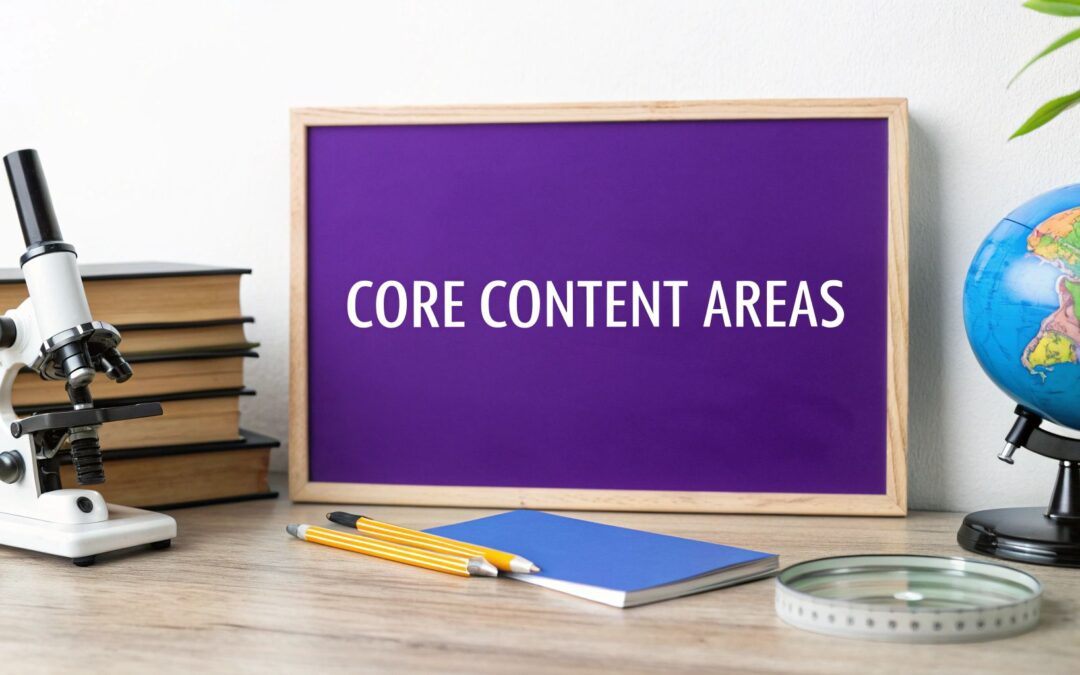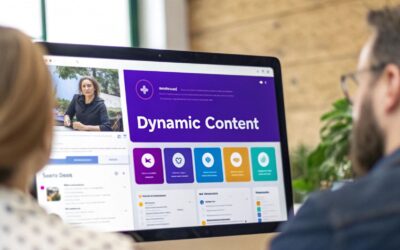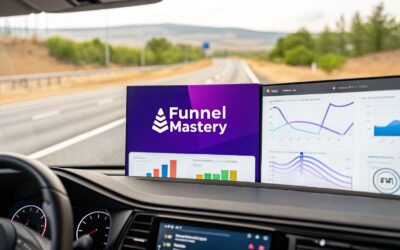When you hear the term content areas, what comes to mind? For most people, it brings back memories of the classic school subjects: math, science, English, and social studies. And that’s exactly what they are. Think of content areas as the major categories that organize everything taught in a school, creating the foundational pillars for a well-rounded education.
The Building Blocks of Education
Trying to build a house without a blueprint would be chaos. You’d end up with a confusing mess that doesn't really work. In the same way, content areas serve as the essential blueprint for learning, neatly organizing knowledge into logical, understandable subjects. Each one, from algebra to art history, is like a dedicated "room" of knowledge in the house of education.
This structured approach is incredibly helpful for everyone involved:
- It creates clarity and focus. Teachers have a clear roadmap for what to teach, and students know exactly what they’re expected to learn in each class.
- It builds knowledge logically. Skills are designed to stack on top of one another. The basics of elementary science, for example, pave the way for tackling complex topics like biology or chemistry down the road.
- It encourages balanced learning. By dedicating time to a variety of subjects, this system nurtures a whole range of skills—from analytical and critical thinking to creativity and communication.
This simple concept map shows how all these core subjects branch out to create a complete educational framework.
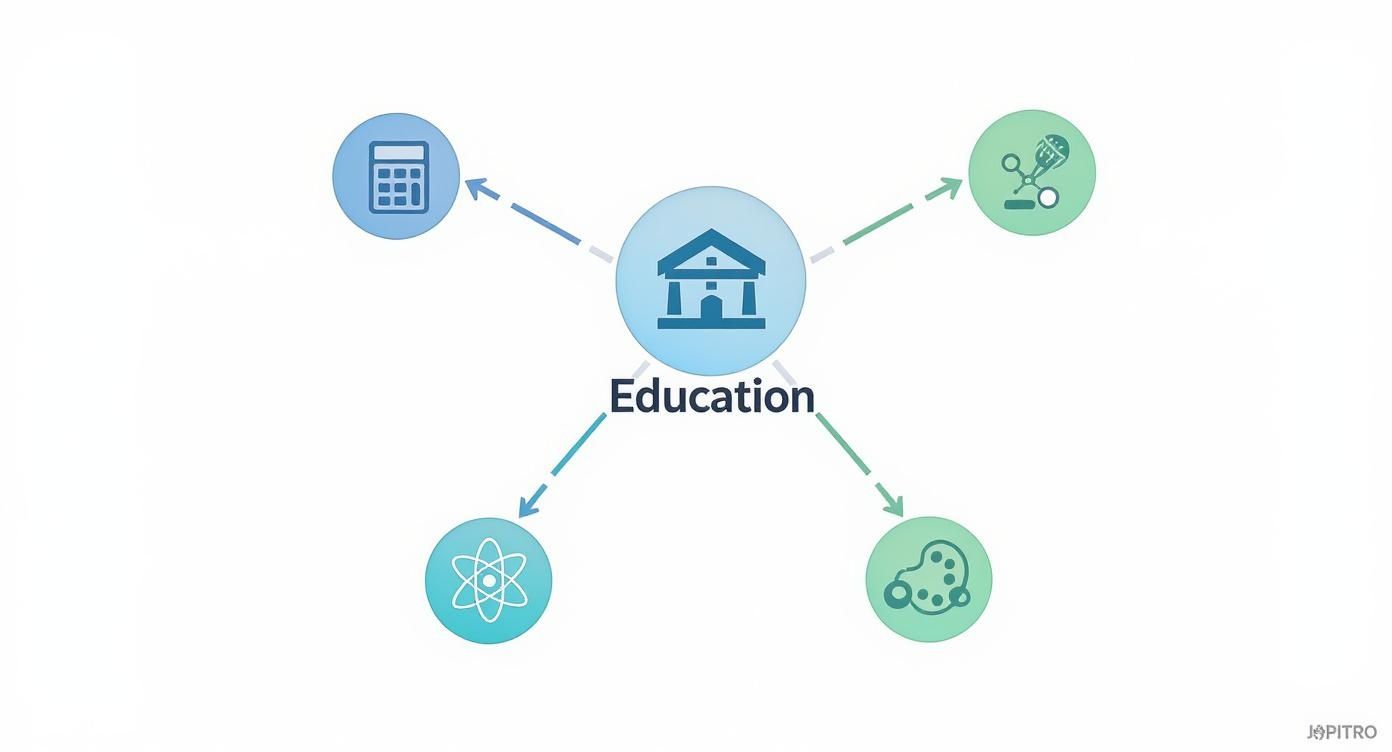
As you can see, even though each content area is distinct, they all connect back to the central goal of helping students learn and grow.
Global Standards and Subject Specifics
Education systems all over the world use content areas to structure curricula and track student progress. This isn't just a local idea; it's a global standard. UNESCO reports show a steady climb in school completion rates worldwide, now at 88% for primary and 78% for lower secondary education. This success highlights how a subject-based framework is universally effective at guiding students through their academic journey.
The core idea is simple: Content areas categorize knowledge to make it manageable, measurable, and meaningful. They transform the vast world of information into a coherent educational path.
Each subject has its own unique language, methods, and goals. For a practical example, consider a topic like What is economics for kids. This single subject pulls in elements from math, social studies, and critical thinking to create its own focused field of study. It’s this combination of different areas that ultimately delivers a rich and comprehensive learning experience.
To make this clearer, let's look at some traditional content areas and what they focus on.
Common Content Areas and Their Core Focus
| Content Area | Primary Focus | Example Skills |
|---|---|---|
| Language Arts | Communication, literacy, and expression | Reading comprehension, writing, grammar, public speaking |
| Mathematics | Logic, problem-solving, and numerical reasoning | Algebra, geometry, statistics, critical thinking |
| Science | Understanding the natural world and scientific inquiry | Experimentation, observation, data analysis, hypothesis testing |
| Social Studies | Human society, history, and culture | Historical analysis, geography, civics, cultural awareness |
| The Arts | Creativity, expression, and aesthetic appreciation | Painting, music performance, dramatic interpretation, design |
This table gives a snapshot of how each subject contributes a unique set of skills, all working together to build a complete education.
Why Content Areas Are Essential for Learning
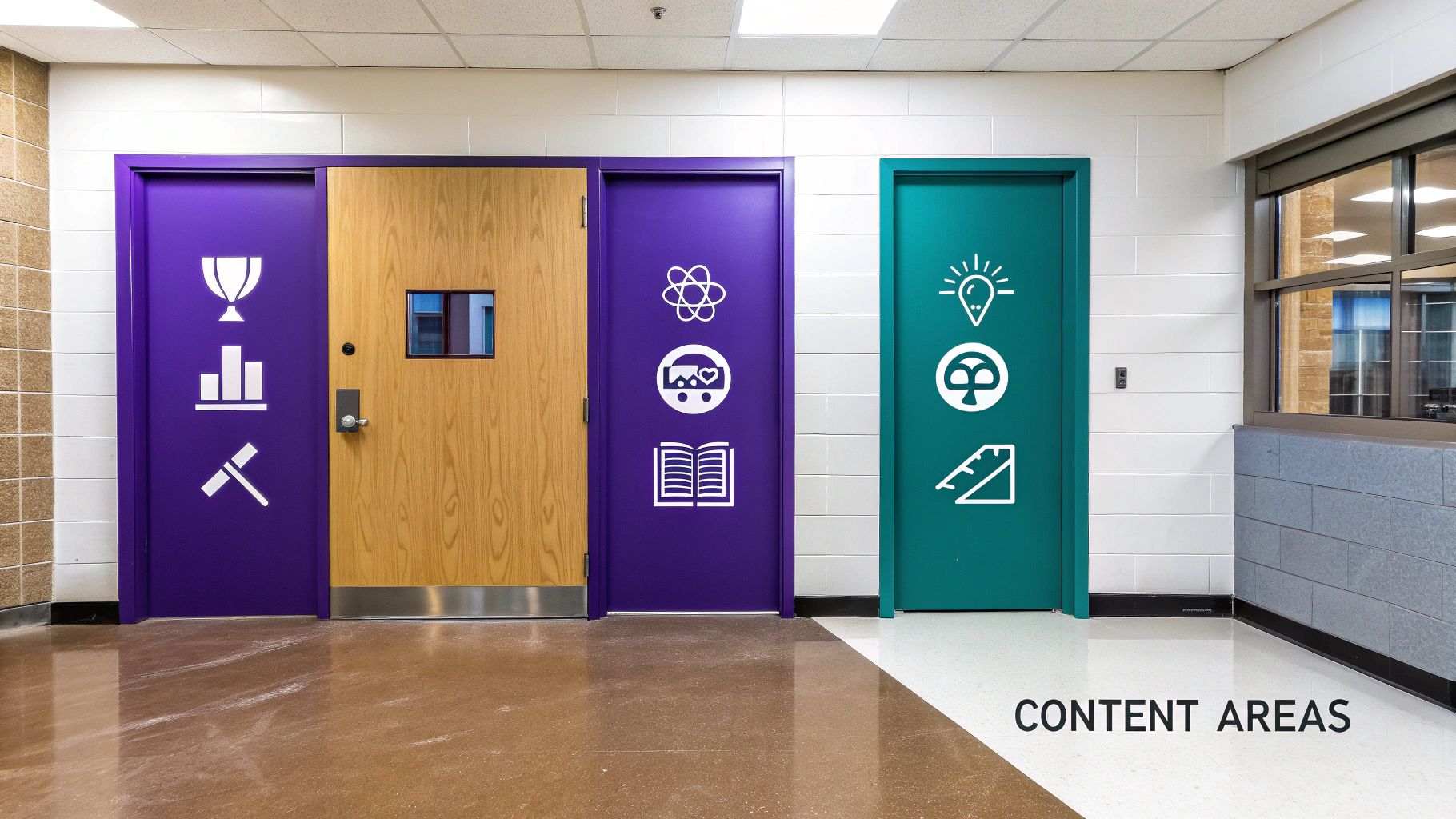
Content areas are much more than just a way to organize a school day; they're the very foundation of a balanced and effective education. Think of it like a diet. If you only ate from one food group, you'd miss out on essential nutrients. In the same way, an education focused on just one subject produces a very narrow set of skills.
This structured approach makes sure students get a well-rounded experience that challenges different parts of their brain. By setting aside dedicated time for subjects like math, science, and the arts, schools guarantee that every student builds a diverse intellectual toolkit. That balance is absolutely critical for healthy cognitive development.
Creating Clear Pathways for Growth
One of the biggest wins of defining what are content areas is that it creates clear, logical learning pathways. Students aren't just memorizing random facts; they're following a carefully designed sequence. The basic science concepts they pick up in elementary school, for example, are what prepare them for complex topics like chemistry later on in high school.
This structure allows teachers to build on prior knowledge year after year, which makes the whole learning process more efficient and a lot less overwhelming. It helps prevent those frustrating gaps in a student's understanding and ensures they’re truly ready for the next academic challenge.
Content areas provide a roadmap for learning. They guide students from basic understanding to deep mastery by connecting ideas in a logical, progressive order, which research shows significantly boosts reading comprehension and knowledge retention.
Fostering Expertise and Preparing for the Future
This framework is also a huge benefit for teachers. When educators can focus on a specific content area, they develop incredibly deep subject-matter expertise. This empowers them to teach with more passion and insight, bringing their subjects to life in a way a generalist might not be able to.
Ultimately, this entire system is designed to prepare students for the real world. A well-rounded education gives them a versatile toolkit of skills—analytical, creative, and communicative—that are non-negotiable for navigating college and future careers. It’s this diverse foundation that gives them the power to adapt, solve problems, and find success long after they've left the classroom.
How Modern Demands Are Reshaping Content Areas
Content areas aren't concepts carved in stone. They're living, breathing things that have to adapt to a world that's constantly on the move. Just like a website needs regular updates to stay relevant, what we teach—and how we teach it—is always evolving to prepare students for the future they'll actually face.
This means the traditional subjects are making room for new, essential disciplines. Fields like digital literacy and computer science, once considered niche extras, are quickly becoming core parts of the curriculum. The same goes for environmental studies as global awareness becomes non-negotiable. The very definition of what are content areas is expanding far beyond the classic reading, writing, and arithmetic.
The goal has shifted from purely theoretical knowledge to a practical blend of academic learning and real-world application. We're aiming to equip students with a skill set that's not just relevant but immediately useful for modern careers.
The Rise of Hybrid Learning and Technical Skills
It's not just what is being taught that's changing; how it's delivered is undergoing a massive transformation. Hybrid models, mixing in-person instruction with online learning, are fast becoming the new standard. In fact, by 2025, over 50% of higher education institutions are planning to expand their hybrid programs, largely because student satisfaction is soaring as high as 93%.
This evolution also shines a brighter spotlight on Career and Technical Education (CTE). These programs create a direct bridge between classroom knowledge and specific job skills. It's a powerful combination. Students in CTE programs boast a 10% higher high school graduation rate, and more than 75% of them go on to pursue higher education, proving just how valuable this hands-on approach really is.
Integrating Holistic Student Development
Today’s education also understands that academic success and personal well-being are two sides of the same coin. This has sparked the integration of crucial frameworks like Social Emotional Learning (SEL), which helps students build vital skills like self-awareness and relationship management.
This broader, more human-centric approach actually mirrors trends we see in fields like web design. A web designer constantly asks "what is content personalization" to create a better experience for each unique user. In the same way, educators are now personalizing the learning journey to support the whole student.
It's a clear signal that modern education is about so much more than memorizing facts. It's about developing capable, confident, and well-rounded individuals.
Using Content Areas to Measure Educational Success

Content areas are more than just a way to organize a school day. They create a universal language for measuring and comparing the quality of education across the entire globe. Think of it as a standardized report card for countries, where subjects like math, science, and reading are the core benchmarks for success.
International assessments rely on student performance in these key subjects to rank national education systems. By focusing on these fundamental content areas, policymakers can get a clear picture of what effective teaching methods and curriculum designs actually look like in practice. It’s a data-driven approach that moves the conversation beyond theory and into the real world.
These global comparisons are powerful. They can be huge drivers for policy change and educational reform. When one country sees another getting better results, it naturally sparks a critical look at its own methods, funding, and priorities.
Gauging Performance on a Global Stage
These international benchmarks offer profound insights into educational quality and equity. A landmark study, for example, tested the math, science, and reading abilities of 470,000 fifteen-year-olds, revealing huge performance gaps between nations. China led the pack in average scores, with South Korea, Finland, Hong Kong, and Singapore close behind, setting a high bar for the rest of the world.
To give you a clearer idea, here's a quick look at how some of the top performers stack up in these crucial subjects.
Top Performing Countries in Core Content Areas (PISA Snapshot)
| Country | Mathematics Ranking | Science Ranking | Reading Ranking |
|---|---|---|---|
| China | 1 | 1 | 1 |
| Singapore | 2 | 2 | 2 |
| Estonia | 5 | 3 | 4 |
| Canada | 8 | 6 | 3 |
| Finland | 12 | 5 | 6 |
| South Korea | 6 | 7 | 7 |
This data shows that what happens in the classroom has massive implications. These assessments aren't just academic exercises; they're vital metrics for gauging a country's future workforce and its competitive edge on the world stage.
Just as a business owner would track website performance like a pro to measure success, nations use these academic metrics to evaluate their educational health and plan for the future.
By standardizing the measurement across core subjects, these assessments give countries a clear, objective look at their strengths and weaknesses, creating a roadmap for improvement and innovation in teaching.
Ultimately, this global perspective helps everyone understand what's working, pushing education systems worldwide to aim higher and do better for their students.
Developing Literacy Across Every Content Area
When you hear the word "literacy," your mind probably jumps straight to the English classroom. But that’s a really narrow way of looking at it. The truth is, every single subject has its own language, its own vocabulary, and its own rules of the road.
Think about it. Reading a scientific lab report requires a completely different skillset than analyzing a historical document or decoding a mathematical proof. This is the heart of what we call content area literacy.
It’s the simple but powerful idea that students need specific reading, writing, and thinking skills to truly get what’s going on in each subject. Without them, a student might be able to sound out the words in a biology textbook but will completely miss the bigger picture. They need to learn how to "speak" the language of science, math, and history.
From Words to Understanding
This specialized literacy is so much more than just knowing what words mean. It's about teaching students how to think like an expert in that field.
- In Science: Students learn to read diagrams, make sense of experimental data, and follow the cause-and-effect relationships packed into dense, technical writing.
- In History: The focus shifts. Here, it’s all about spotting an author's bias, comparing primary and secondary sources, and understanding how one event fits into a much larger story.
- In Math: Literacy means translating a word problem into a clean equation, understanding what all the symbols mean, and being able to explain the logic behind a solution.
By building these skills, we shift students from just passively reading to actively wrestling with the material. They learn not just the "what," but the "how" and "why" behind it all—and that’s where real, lasting knowledge comes from. For anyone applying these ideas to digital content, there are some great strategies to increase your content quality that also hinge on deep audience understanding.
The real goal of content area literacy is to give students the tools to unlock knowledge on their own. It empowers them to grapple with complex information and build their own understanding, instead of just memorizing a pile of facts.
When we teach this way, we help students become fluent in the many different languages of learning. It ensures literacy isn't just another one of the content areas, but a foundational skill woven through every single one, creating sharper, more critical thinkers across the board.
Common Questions About Content Areas
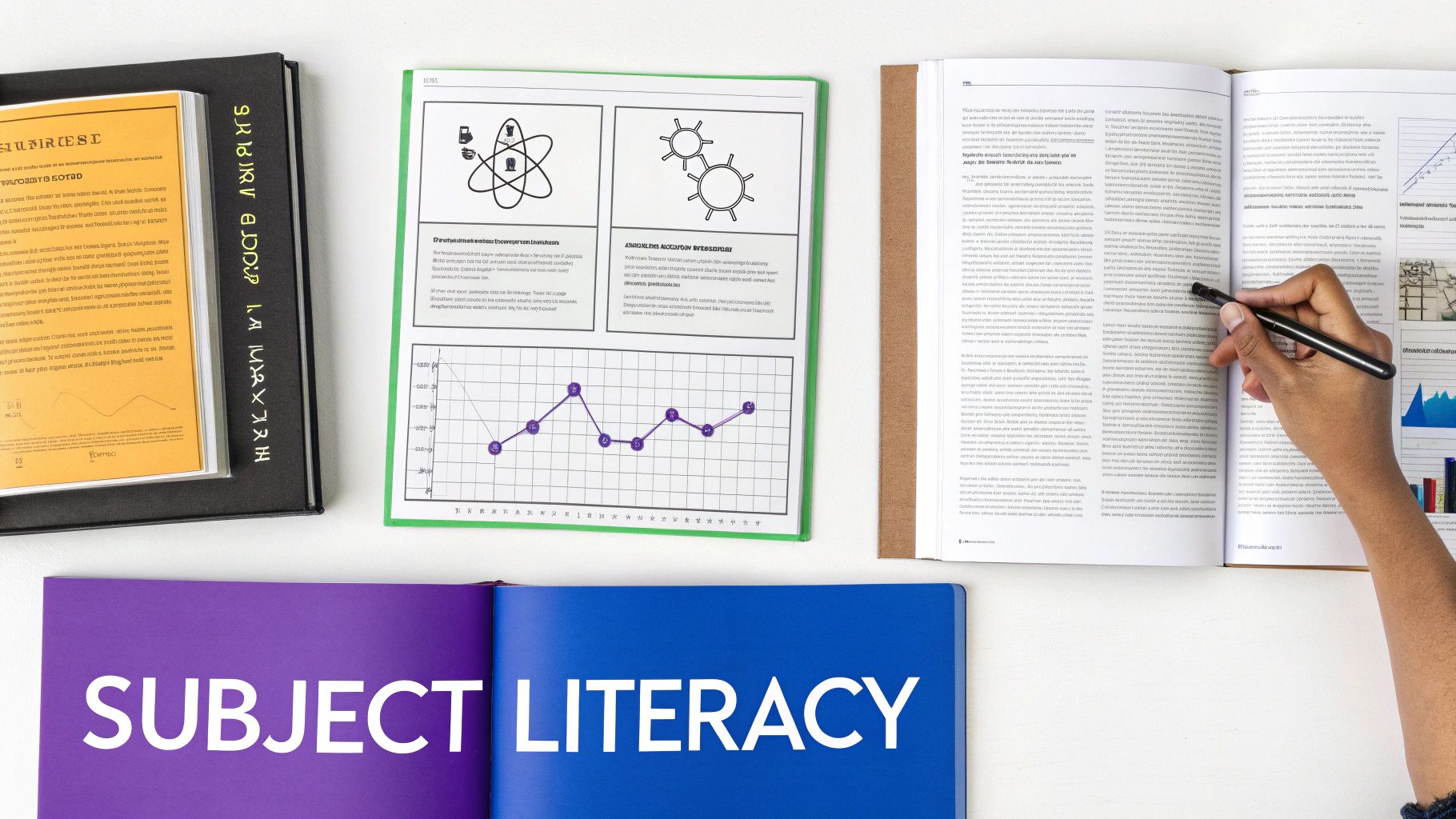
As we've worked through the world of content areas, a few common questions always seem to pop up. This section is all about getting you quick, clear answers to tie up any loose ends and make sure the core ideas really stick.
Think of it as your go-to reference to solidify your understanding. Let's tackle some of the most frequent queries we hear.
Content Area vs. Curriculum: What Is the Difference?
It’s incredibly easy to get these two mixed up, but they play very different roles in education. The simplest way to think about it is that a content area is the “what,” while a curriculum is the “how.”
- Content Area: This is the big-picture subject, like 'Science' or 'Mathematics.' It just defines the overall field of knowledge.
- Curriculum: This is the detailed game plan. It lays out the specific lessons, activities, materials, and tests used to teach that subject from one grade level to the next.
So, the content area is the destination—the body of knowledge we want students to grasp. The curriculum is the turn-by-turn roadmap that gets them there, one lesson at a time.
A content area provides the framework, but the curriculum brings it to life. One gives structure, and the other provides the substance and sequence for learning.
Who Decides What the Core Content Areas Are?
That's a fantastic question because it cuts right to the heart of educational policy. The core subjects taught in schools aren't decided by some single global authority; they're typically set by national, state, or regional education bodies.
These decisions are shaped by a mix of factors, including academic traditions, societal values, and what skills are seen as essential for the future workforce. While fundamentals like math and language arts are pretty much universal, the emphasis on other subjects—like technology, civics, or the arts—can vary wildly between educational systems, reflecting local priorities and goals.
Do Content Areas Exist in Higher Education?
They sure do. In fact, they become even more focused and specialized once you get to the university level. In college, content areas are the foundation for entire academic departments—think the History Department, the School of Engineering, or the College of Fine Arts.
A student's major is basically a deep dive into one highly specific content area. At the same time, most universities have general education requirements that force students to gain a broad knowledge base across multiple subjects, which just goes to show how important that well-rounded approach is, even at advanced levels.
At Divimode, we believe in building powerful, engaging web experiences. Our premium plugin, Divi Areas Pro, gives you the tools to create advanced popups, fly-ins, and dynamic content that captivate your audience. Take control of your Divi website today.
Learn more at https://divimode.com
